I clearly remember the conversation I had with my landscape designer, Sasha, as she was quizzing me on what kind of plants I wanted in my backyard landscape. I, of course, had no idea, but at some point, I blurted out that I “sort of like ferns.” I don’t know why I said it, but I did. And so, three ostrich ferns were installed in one of the back beds that would come to be called the ostrich fern bed. (Japanese beech ferns and Japanese painted ferns were also part of the plan, but they were planted in different beds.) Over the past three seasons I’ve been thrilled to see the ostrich ferns get fully established, forming a tall, brilliant green backdrop in early spring for the other plants in the bed. The rest of the year their large fronds add fascinating texture and contrast with the foliage of the coral bells, brunnera, and variegated liriope that live in the front of the bed.
Ostrich ferns are beautiful, and they serve a wonderful purpose in landscape design, but at heart, they are evil and will spread wherever they want in the garden. They really don’t play well with others, and as this summer progressed I found myself taking more and more of my time battling unwanted baby ostrich ferns growing out of control, often right in the middle of other plants. Each time I went to dig out the new invaders, I was amazed at the steel-like runners that connected the ferns. When I grabbed one end, I could pull up several feet of runners all the way back to the mothership plant anchored in the rear of the bed. It was downright frightening.
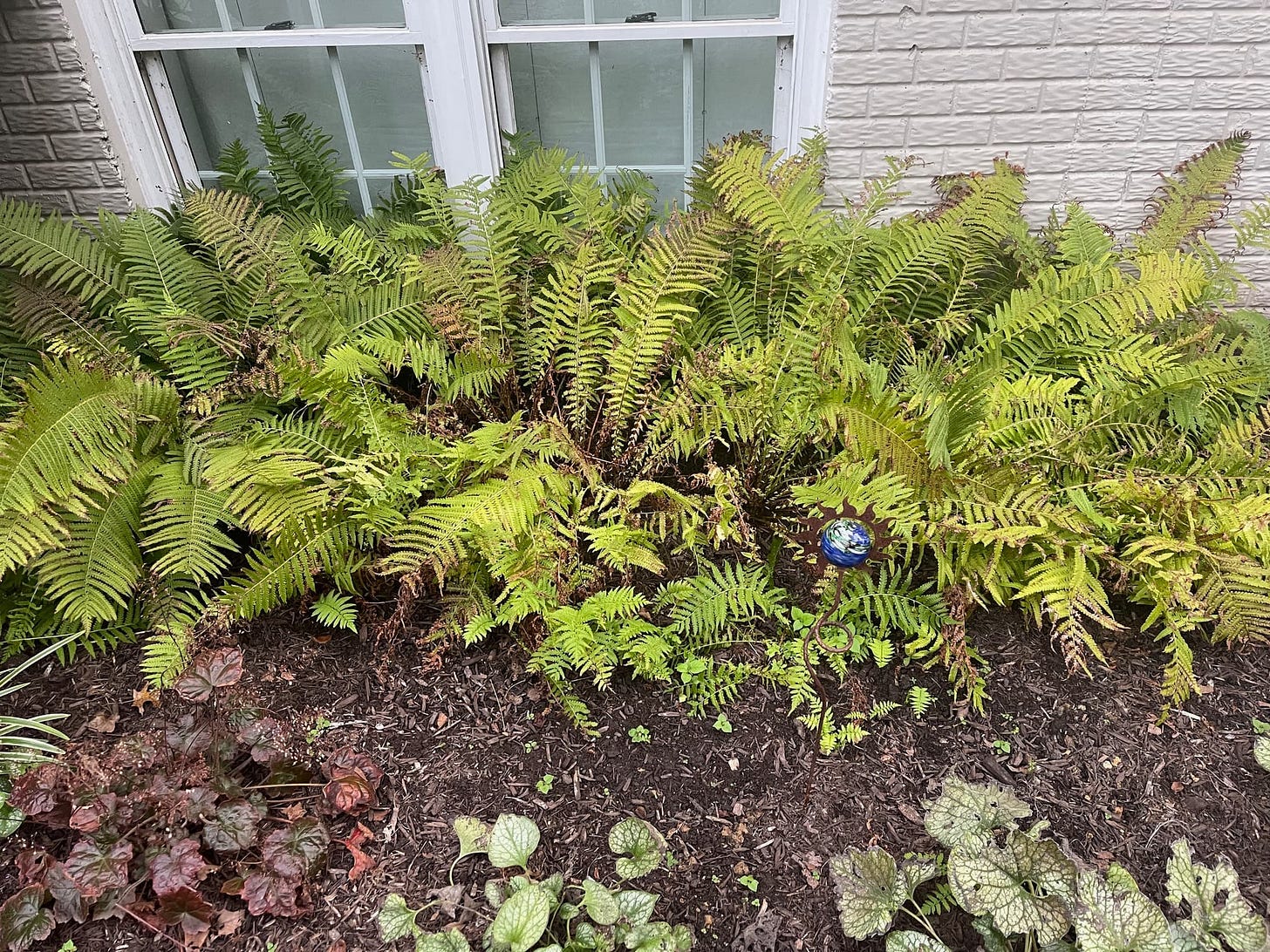
And so, sadly, this past week I decided enough is enough and began moving the ostrich ferns to the woodland bed on the other side of the garden. Digging up the ferns wasn’t too difficult. The soil was wet and soft because I chose a day when the irrigation system had run overnight. This wasn’t my first rodeo when it came to digging groundcover out of a bed. Notably, I made short work of creeping jenny when it became too unruly to stay in the astilbe bed and needed to be liquidated ... er ... removed. As is my habit nowadays, I took some photos as the ostrich fern operation progressed.
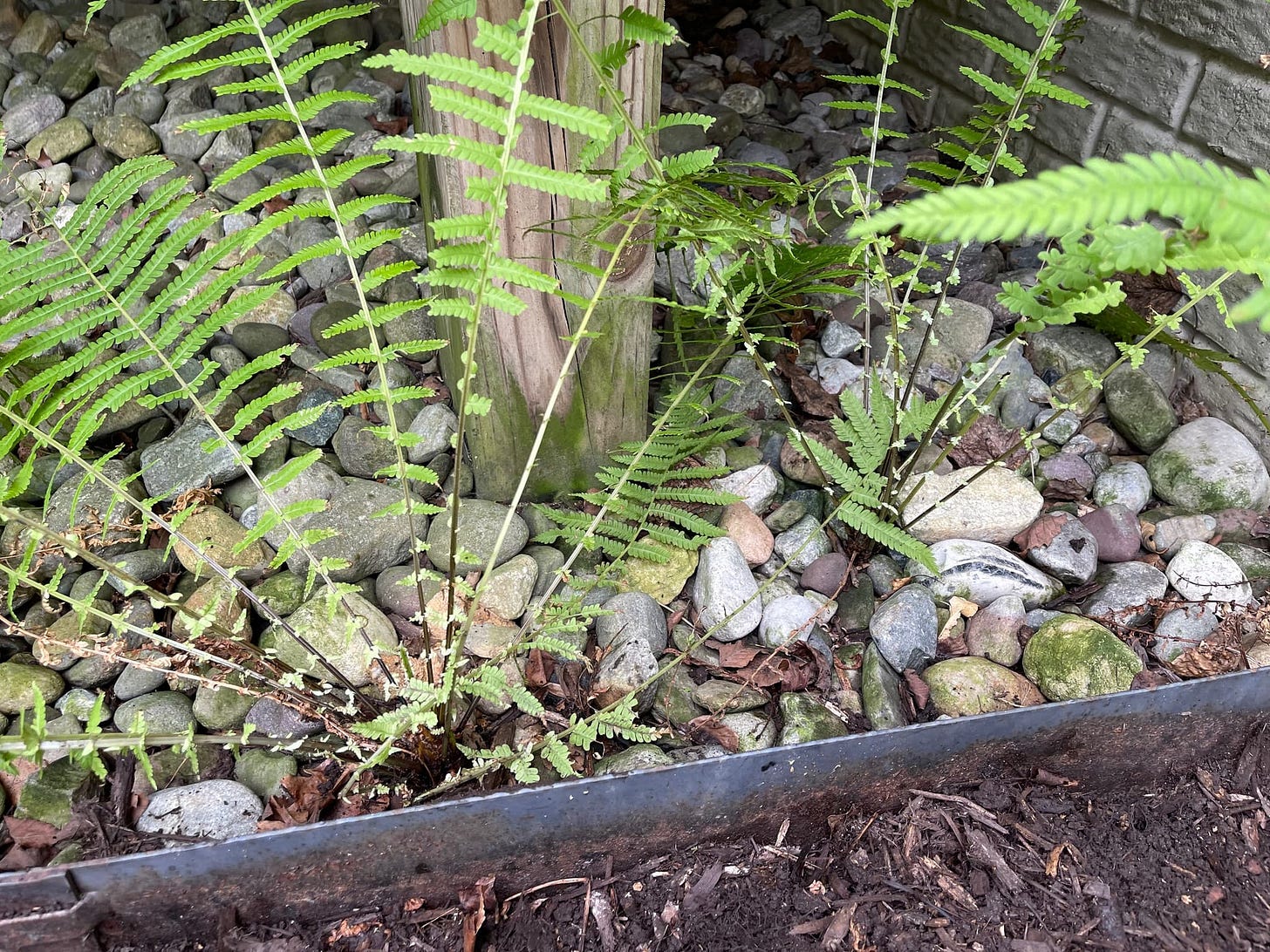
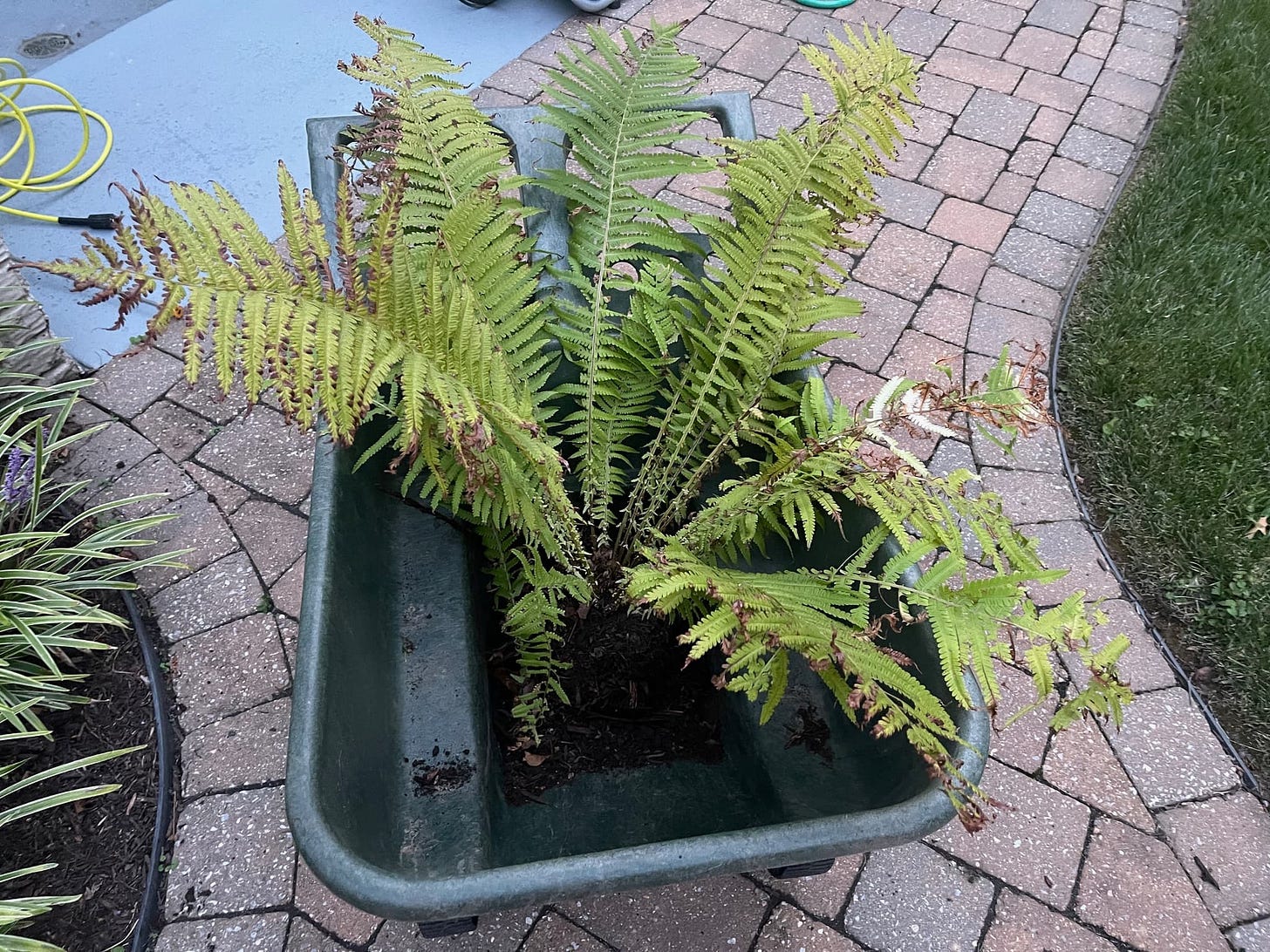
I moved several plants to a space under the arborvitae trees in the woodlands bed where hopefully they will get enough shade. The soil is surprisingly loamy under the trees, once you get past the roots, so I added my favorite cocktail of compost and topsoil. Now I’m hoping for the best. I’m imagining the bed will be relatively maintenance-free in the future with the ostrich ferns and the Japanese beech ferns slowly spreading out under the trees. I still have hopes for the white astilbe I transplanted back there when we demolished our gazebo, so the vision is ferns and astilbe living in harmony while the deer find something else to eat.

As for the ostrich fern bed, I suppose I’ll have to come up with a new name for it, since it’s no longer home to any ostrich ferns. About half of the bed is now completely empty, and I’m once again stuck with the usual conundrum of what to plant in an area that gets, at most, partial sun, and in the areas closest to the deck, all shade. I recently purchased some ornamental feather grass plants for the back of the bed, but the beige-colored brick wall of the house did a great job of camouflaging the seed heads on the plants so you couldn’t see them. I ended up moving the ornamental grass to the back of the waterfall bed, where I’ll have to reevaluate what to do with them next spring. I was looking at a beautiful ornamental grass called pink muhly grass that has misty pink seed heads forming a pink cloud over the green foliage. It might look great against the beige brick. The research says the plant can grow in partial shade but prefers full sun. It’s on my list as a strong maybe.
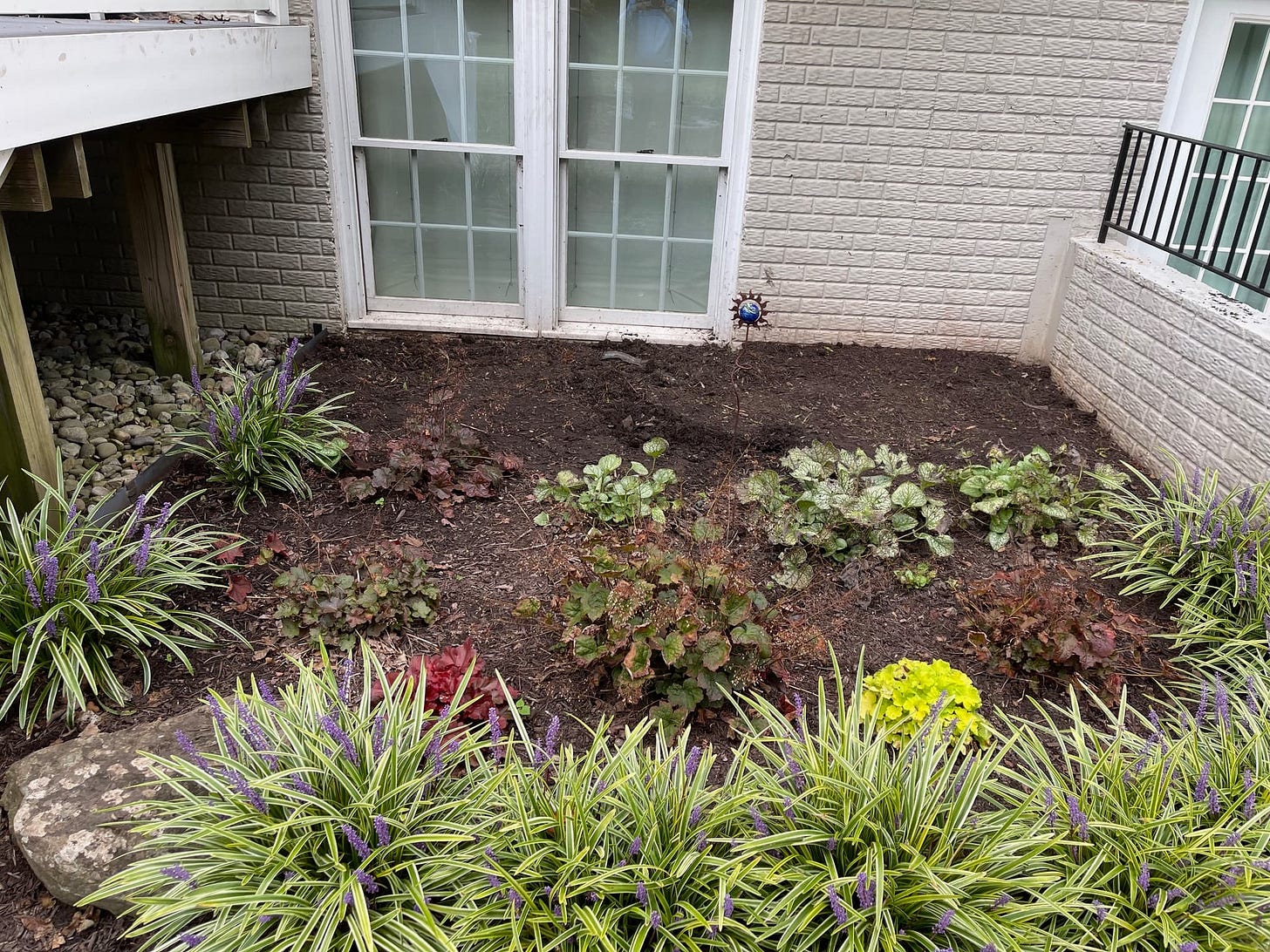
Lastly there are always the standby flowering shrubs for shade, namely hydrangeas, azaleas, and rhododendrons. My wife, Linda, was telling me about a new type of azalea called encore azaleas that are about the right size and bloom all summer long. I’ll be looking into them more as this season winds down. The problem with all of the flowering shrubs is the deer eat them like candy. I’ve already lost my share of battles with the deer vs. my hydrangea bushes, and I’m not sure I’m up for more of the same with new azaleas and rhodos.
Over the past month or so I’ve been shocked at how the garden seems to be changing at light speed. As the growing season comes to an end, I’ve lost all control and find myself moving plants, buying new plants, and generally making a nuisance of myself when it comes to the garden. All I can say is, it sure is fun to be retired.
I have a list of newsletter topics just waiting to be written as we barrel toward the end of the planting season. I hope you will stick around and share the fun with me. My son, Danny, was telling me the other day that it’s weird to be sending out newsletters at 6 p.m. on a Friday night. With luck, I am entertaining you with weekend reading. If you care to share this content, please feel free to do so by clicking on the SHARE button in the text or by sending a friend or foe a link at kensolow.substack.com. You can explore the more than 45 previous newsletters, for the low, low, price of FREE in the archives.




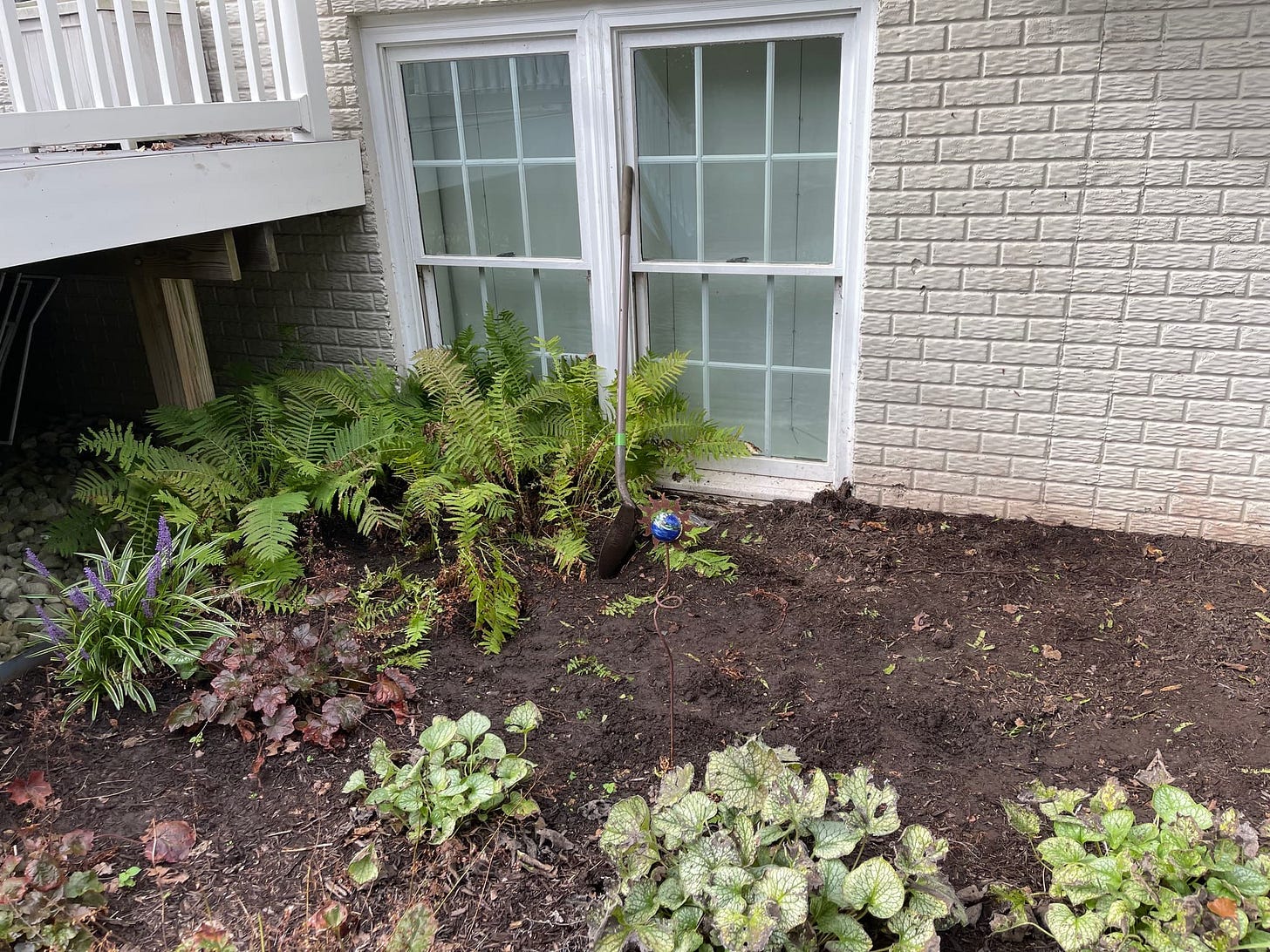
How about Ostrich-cized Bed?